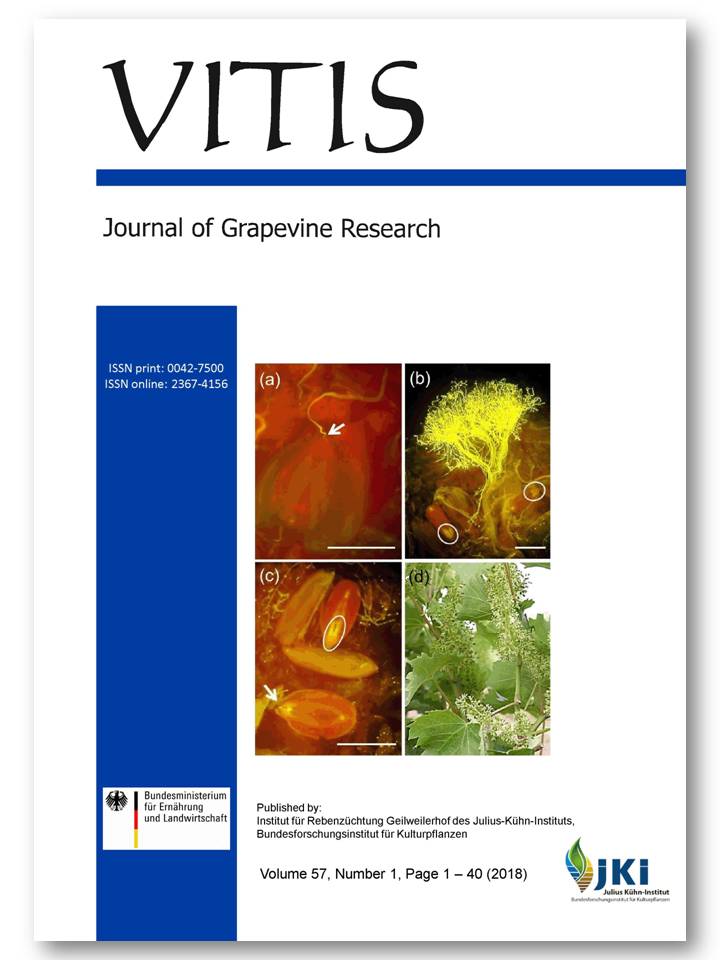Regulation of cluster compactness and resistance to Botrytis cinerea with β-aminobutyric acid treatment in field-grown grapevine
DOI:
https://doi.org/10.5073/vitis.2018.57.35-40Keywords:
BABA (DL-β-amino-n-butyric acid); Botrytis bunch rot; cluster compactness; epifluorescent microscopy; female sterility.Abstract
Our paper offers unique information regarding the effects of DL-β-amino-n-butyric acid (BABA) on grape cluster compactness and Botrytis bunch rot development. The impact of treatment was investigated on a native Hungarian grapevine cultivar, Királyleányka (Vitis vinifera L.) during four seasons. The cultivar with dense clusters and with thin skinned berries provided excellent samples for bunch rot studies. In addition, the female sterility effect of BABA in grapevine flowers was examined, which may contribute to looser clusters. Cluster compactness was characterized with two different indexes, bunch rot incidence was assessed in percentages. Ovaries of flowers were examined under epifluorescent microscope. The applied treatments significantly influenced cluster indexes. Bunch rot incidence, however, was highly influenced by the precipitation during ripening. In years 2011 and 2013 reduced bunch rot was detected, while the extremity of rain in 2012 and 2014, resulted in no epidemic or high infection, respectively. Microscopic studies proved that successful treatments on cluster structure can be traced back to the female sterility caused by BABA. Our results presented clear evidence for the effectiveness of BABA treatment on Botrytis bunch rot by promoting looser clusters.
Downloads
Published
Issue
Section
License
The content of VITIS is published under a Creative Commons Attribution 4.0 license. Any user is free to share and adapt (remix, transform, build upon) the content as long as the original publication is attributed (authors, title, year, journal, issue, pages) and any changes to the original are clearly labeled. We do not prohibit or charge a fee for reuse of published content. The use of general descriptive names, trade names, trademarks, and so forth in any publication herein, even if not specifically indicated, does not imply that these names are not protected by the relevant laws and regulations. The submitting author agrees to these terms on behalf of all co-authors when submitting a manuscript. Please be aware that this license cannot be revoked. All authors retain the copyright on their work and are able to enter into separate, additional contractual arrangements.



